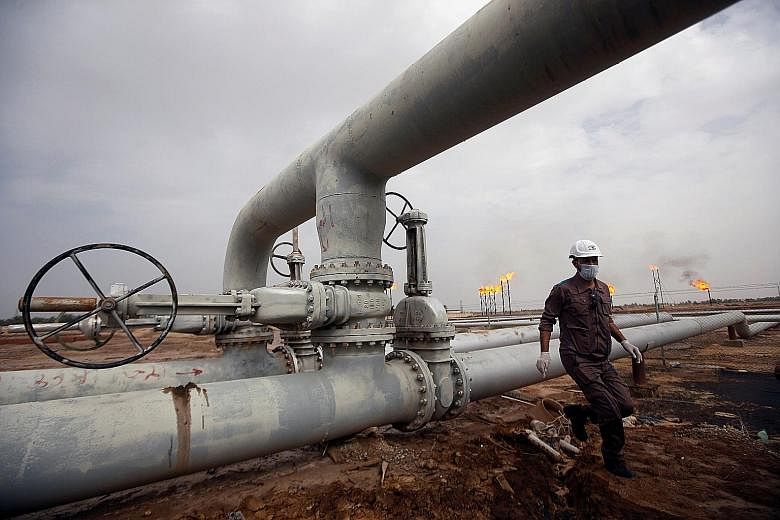SYDNEY • Oil's spectacular collapse deepened as widening global efforts to fight the spread of the coronavirus looked set to trigger the most severe contraction in annual oil demand in history.
Futures tumbled by more than 6 per cent yesterday after losing a quarter of their value last week - the largest drop since 2008.
Even a massive emergency move by the US Federal Reserve to cushion the world's biggest economy just added to the fear gripping markets, with New York crude at one point dropping below US$30 a barrel.
Petrol prices collapsed in the United States. The market is being pushed deeper into turmoil by unprecedented simultaneous demand and supply shocks.
Forecasts for global oil use are being cut dramatically as government measures to contain the spread of the pandemic restrict the movement of people and throw supply chains into chaos.
At the same time, giant producers are embarking on a destructive price war after the disintegration of the Organisation of Petroleum Exporting Countries-plus alliance, which is unleashing a flood of supply.
"Global financial markets are being rattled by the growing severity of the coronavirus and at the same time spooked by the enormity of the stimulus measures to combat it," said Ms Vandana Hari, founder of Vanda Insights in Singapore.
"If the pandemic continues to worsen across the globe, oil will head lower. If it worsens in the US, belt up for an apocalypse."
Oil traders, executives, hedge fund managers and consultants are revising down their estimates for global oil demand.
The growing fear is that consumption, which averaged just over 100 million barrels a day last year, may contract by the most ever this year.
That would easily outstrip the loss of almost 1 million barrels a day in 2009 and even surpass the 2.65 million barrels registered in 1980, when the world economy crashed after the second oil crisis.
Brent crude tumbled as much as 6.6 per cent to US$31.63 a barrel before trading 5.9 per cent lower at US$31.87 as of 6.58am in London yesterday.
Futures fell 25 per cent last week, the most since December 2008. West Texas Intermediate slid 4.2 per cent to US$30.40 on the New York Mercantile Exchange, after earlier falling to as low as US$29.75.
Travel restrictions across the globe tightened further over the weekend, with the US extending its travel ban to include Britain and Ireland.
The measures are going to hammer demand for petrol. The motor fuel's premium over crude fell to as little as US$2.88 a barrel on the Nymex. It was US$17 on March 6.
The Fed cut its benchmark rate by a full percentage point to near zero and will boost its bond holdings by at least US$700 billion (S$996 billion).
The move could trigger a fresh round of monetary easing around the world as countries look to keep money flowing as economic activity grinds to a halt.
BLOOMBERG

